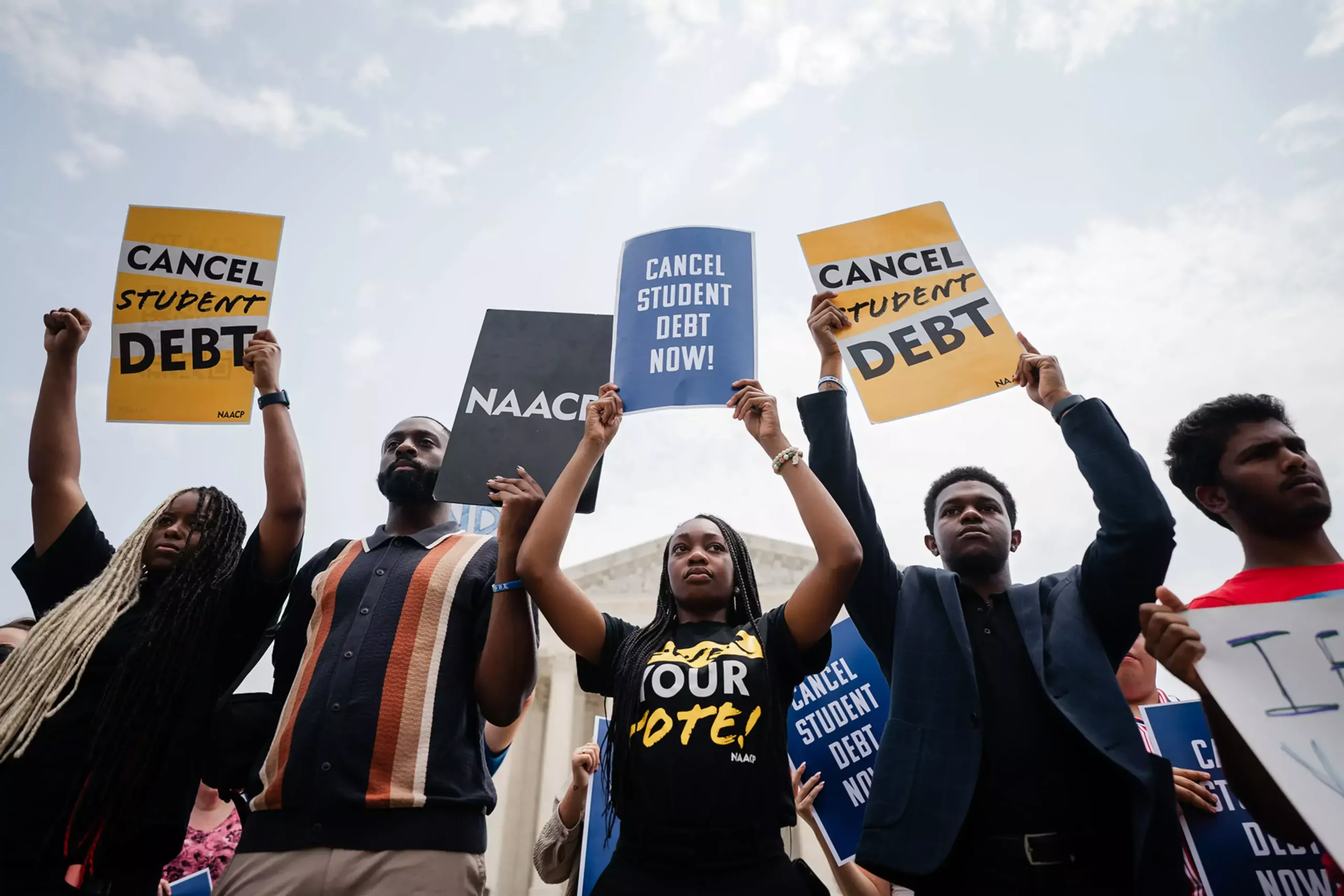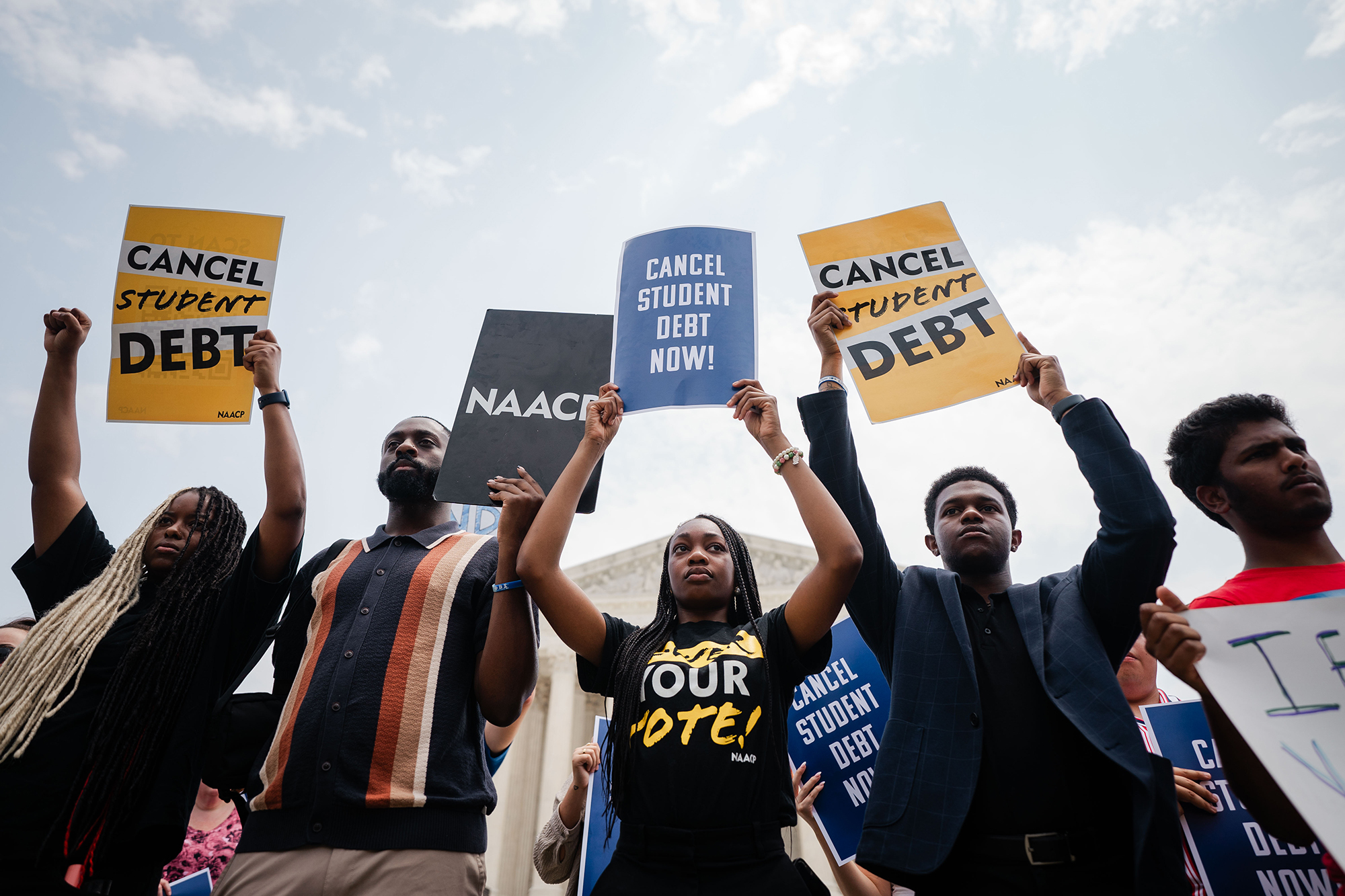Student Debt Hindering Millennials: The Financial Anchor

Student debt is significantly impeding millennials’ financial stability. Many struggle with delayed home ownership and retirement savings due to this burden.
Surging college tuition rates and the necessity of higher education for competitive jobs have left many millennials grappling with substantial student debt. This financial strain affects their ability to invest in long-term goals, such as buying a home or saving for retirement, altering the traditional trajectory of financial independence.
This issue not only impacts individual economic freedom but also has broader implications for the national economy. As these young adults work to manage and repay their debt, their spending power diminishes, potentially stalling economic growth. Addressing the student debt crisis is critical for empowering a generation to reach its full financial potential and contribute more robustly to the economy.

Credit: www.cfr.org
The Gravity Of Student Debt For Millennials
The Gravity of Student Debt for Millennials takes a sobering look at the financial weight shouldered by a generation. Student loans impact millennials’ life choices, from careers to homeownership. Understanding how student debt has ballooned and the typical profile of millennial debtors offers insights into this pressing issue.
Ballooning Borrowing Trends
The amount millennials borrow for education has skyrocketed. It is not uncommon for individuals to amass tens of thousands in debt.
- Total debt: Surpasses $1 trillion in the US alone.
- Average debt: Exceeds $30,000 per graduate.
- Long-term effects: Ripple into retirement savings and asset building.
The spike in tuition fees couples with a competitive job market, making repayment a daunting task for many.
Profile Of A Millennial Debtor
A typical millennial debtor is not just fresh out of college. This person faces unique challenges associated with debt management.
| Age Range | 24 to 39 years |
|---|---|
| Employment Status | Often underemployed or job-hopping |
| Financial Priorities | Debt repayment over savings |
| Homeownership | Delayed or unreachable due to debt |
Many delay life milestones, like starting a family or buying a home, due to the financial strain of student loans.
Long-term Effects On Financial Stability
The millennial generation faces a unique financial challenge: a mountain of student debt. This economic burden affects more than just monthly budgeting—it has profound implications for long-term financial stability. Let’s explore how the weight of student loans continues to press on the shoulders of this dynamic generation, altering their economic landscape in deeply concerning ways.
Delay In Major Life Events
Student debt doesn’t just limit the ability to splurge on the occasional luxury; it enforces a delay on pivotal life milestones.
- Homeownership: The dream to own a home becomes elusive, with savings channeled into loan repayments.
- Marriage: Plans to tie the knot often get postponed as couples grapple with their combined debt.
- Starting a family: The financial strain of student loans means fewer resources for child-rearing expenses.
Diminished Wealth Accumulation
The long-term ripple effect of student debt is most evident in the stunted growth of a millennial’s wealth.
| Savings | Investment | Retirement funds |
|---|---|---|
| Eroded by loan repayments, leaving little to squirrel away. | Hampered as potential investment capital diverts to debt. | Compromised, with lower contributions and lost compounding interest. |
Comparing Generational Debt Burdens
Student debt looms large over millennials, making it vital to understand how it compares across different generations. The burden of educational loans isn’t new, but the scale at which it has escalated is startling. Putting this into a clearer perspective requires a deep dive into the comparative history of generational debt burdens.
Boomers & Gen X Versus Millennials
Making sense of debt trends shows stark contrasts. Boomers and Gen X encountered different economic conditions. Their student loans were more manageable. In contrast, millennials face staggering debt levels. The following points shed light on the differences:
- Total debt amounts were generally lower for Boomers and Gen X.
- Millennials often carry loans exceeding their annual income.
- Interest rates have fluctuated, impacting repayment timelines.
Changing Educational Costs Over Time
Tuition fees have skyrocketed over the decades, placing a heavier load on recent generations. The transition is visible when we look at these key points:
| Generation | Average Cost of Tuition | Adjusted for Inflation |
|---|---|---|
| Boomers | $2,000/year | $17,500/year |
| Gen X | $7,000/year | $19,500/year |
| Millennials | $10,000/year | $20,000/year |
This table emphasizes the escalation in costs. It also highlights the disparity in financial pressure felt by each generation when pursuing higher education.

Credit: www.wsj.com
Government And Private Sector Interventions
As millennials struggle with student debt, both government and private sectors take action. Relief programs and initiatives aim to ease the burden. These efforts create paths towards financial freedom.
Public Loan Forgiveness Programs
Several government programs may forgive or reduce student debt. Eligible borrowers feel a sigh of relief.
- PSLF: Public Service Loan Forgiveness rewards non-profit and government employees.
- Teacher Loan Forgiveness: Teachers in low-income schools may see a significant debt reduction.
- Income-Driven Repayment Plans: Payments become affordable, and debt might vanish after 20-25 years.
These interventions target those who serve communities. They promote careers in public service. Check eligibility for these life-altering programs.
Educational Institutions’ Role In Debt Reduction
Schools play a crucial role in mitigating student debt. They offer scholarships and grants. They provide counseling on financial literacy.
| Institution | Debt Reduction Effort |
|---|---|
| Universities | Tuition freezes or reductions keep debt at bay. |
| Community Colleges | Affordable credits and transfer programs cut costs. |
| Trade Schools | Quicker paths to careers mean less debt. |
| Online Education | Lower costs and flexibility reduce loans needed. |
These approaches ensure students face fewer financial burdens at graduation. Smart choices and institution support make a big difference.
Personal Finance Strategies For Those Affected
The burden of student debt on millennials is a pressing concern.
Smart finance strategies can ease this burden.
These tactics help reclaim control over personal finances.
Debt Repayment Plans
Creating a debt repayment plan is crucial.
Start by listing all debts, including student loans.
- Understand different repayment options.
- Prioritize loans with high interest rates.
- Explore loan forgiveness programs.
- Consider income-driven repayment plans.
Use online calculators to set up a monthly budget.
Stick to the budget and monitor progress.
Alternative Education Pathways
Alternative education can also reduce future debt.
- Online courses offer cost-effective learning.
- Community colleges provide affordable credits.
- Certifications can lead to well-paying jobs.
- Apprenticeships combine learning with earning.
Such pathways lessen reliance on student loans.
Always research thoroughly before choosing a path.
The Road Ahead: Predictions For Gen Z
As Millennials continue to navigate the choppy waters of student debt, a new generation watches closely. Gen Z stands on the threshold of their future with trepidation and hope. This generation will likely reshape the way we view college funding, seeking to avoid the financial quagmires that ensnared their predecessors. Let’s explore some predictions for Gen Z as they prepare to chart their own educational and financial paths.
Learning From Millennials’ Experiences
Armed with hard-learned lessons from Millennials, Gen Z is poised to make more informed decisions about their education and finances. A significant shift towards scholarship searches, community college credits, and alternative education paths is expected. Below are key trends that Gen Z might follow:
- Increased use of financial planning tools to avoid debt accumulation
- Preference for higher education institutions offering real-world skills and job placement
- Consideration of college ROI when selecting majors and universities
The Evolving Landscape Of Higher Education
The higher education sector is witnessing a transformation, and Gen Z will be at its forefront. With an eye on flexibility and innovation, here are changes that may become more pronounced:
| Trend | Impact on Gen Z |
|---|---|
| Online Learning Platforms | More affordable and accessible education options |
| Industry Partnerships | Enhanced job readiness and opportunities |
| Competency-Based Education | Learning assessed on skills mastery rather than time |
These changes emphasize practical experience and affordability, attributes that are increasingly important to the upcoming generation. With these evolving educational models, Gen Z could very well mitigate the debt crisis that has heavily impacted Millennials.

Credit: www.cbsnews.com
Frequently Asked Questions Of Student Debt Hindering Millennials
How Does Student Debt Affect Millennials?
Student debt can significantly impact millennials’ financial stability, delaying major life events. High monthly payments often restrict their ability to save for a home, invest for retirement, or start a business, hindering economic growth and personal wealth accumulation.
Is Student Debt Delaying Homeownership For Millennials?
Yes, many millennials are postponing homeownership due to sizable student loan debts. The heavy financial burden limits their savings for down payments and affects their debt-to-income ratios, making mortgage qualifications more challenging.
Can Student Debt Impact Millennial Retirement Plans?
Absolutely. Student debt can force millennials to prioritize loan repayments over retirement savings, potentially leading to reduced pension funds. Delayed investments can also miss out on compound interest benefits, impacting long-term financial health.
What Are Solutions For Student Debt For Millennials?
Solutions include income-driven repayment plans, loan forgiveness programs, refinancing options, and budget management strategies. Pursuing higher-paying job sectors and side hustles can also help accelerate repayment and alleviate the financial strain of student loans.
Conclusion
Navigating the choppy waters of student debt is an all-too-common struggle for many millennials. It’s clear that educational loans can stifle this generation’s financial growth and delay key life milestones. Tackling this challenge demands both personal financial acumen and broader policy reform.
Together, we can seek solutions to lighten the load of student debt, unlocking a brighter economic future for millennials and generations to follow.







